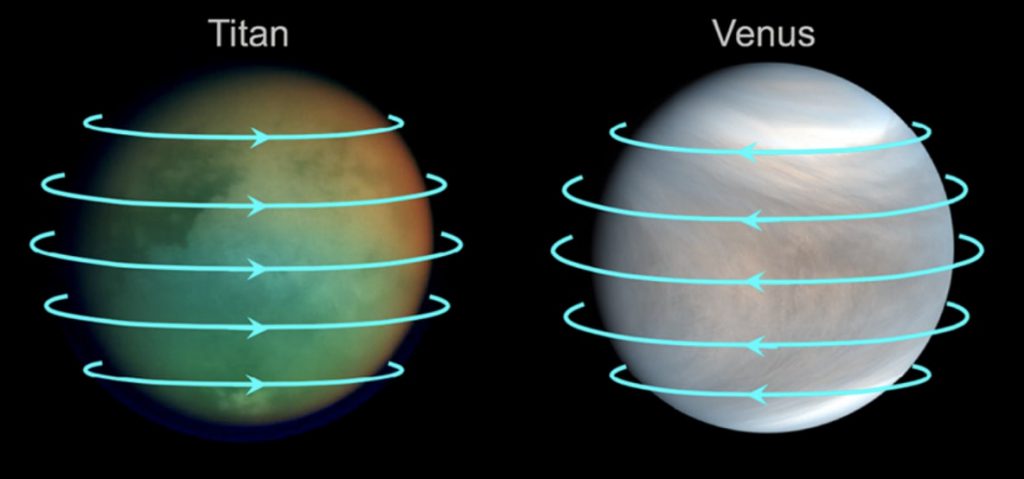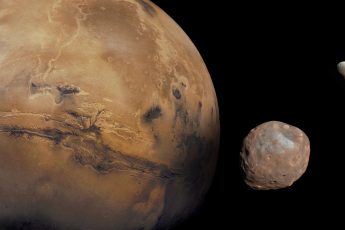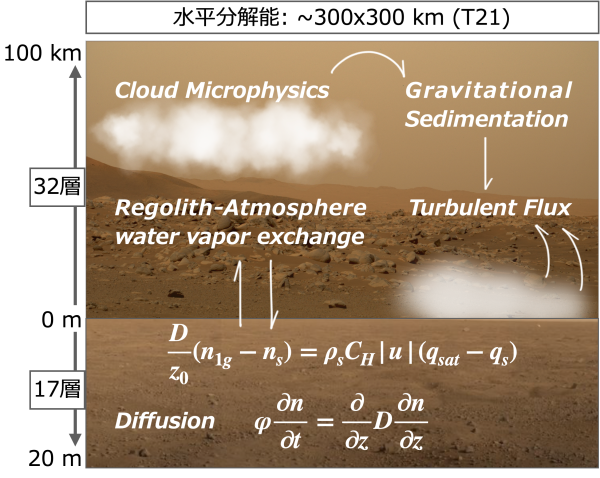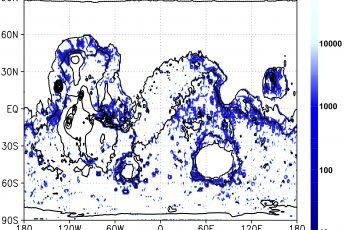Modeling of Venus/Titan atmosphere

In order to elucidate the physics of phenomena that occur in planetary atmospheres, we are working on the atmospheric general circulation model, which are like virtual planetary environments reproduced on a computer.
The best part of this model research is that you can reproduce a planetary environment with your own hands. For example, we can approach subjects such as “What happens if the rotation speed of a planet got slow down?”, “If the atmospheric composition is changed, does this affect on its atmospheric circulation?” which are basically difficult to validate in the real world. That is, by setting up a model of a planet’s characteristics (e.g., its radius, atmospheric composition, and solar radiation intensity), we can reproduce the environment of any planet. If the characteristics of a planet (e.g., its radius, atmospheric composition, solar radiation intensity, etc.) are specified in the model, it is possible to simulate the environment of any planet. My research targets are Venus and Titan, so I can apply the model for both two planets. In other words, the planets themselves can be treated as the laboratories.

Analysis of the reconstructed Venus and Titan environment will help us to understand the physical mechanisms of atmospheric phenomena. These two objects show some similar features, such as a fast rotating atmosphere (~100 m/s) and thick clouds and haze. On the other hand, they also show some completely different characteristics, such as the scorching heat of Venus and methane rain on Titan. These suggest that the two bodies share some physics in common, meanwhile some physics specific to individuals.
Looking for universal physical phenomena in planetary atmospheres is very important for understanding the nature of physics in the atmosphere. On the other hand, the question of how planetary atmospheres are characterized is fascinating because it allows us to get a closer look at the diversity of planets. We would like to use Venus and Titan as a starting point to understand both the physics of planetary universals and the factors that cause changes in planetary environments, and to eventually develop a unified understanding of planetary atmospheric physics, including Jupiter and other gas giants and exoplanets.
(Hiroki Karyu, 4th year undergraduate student)





